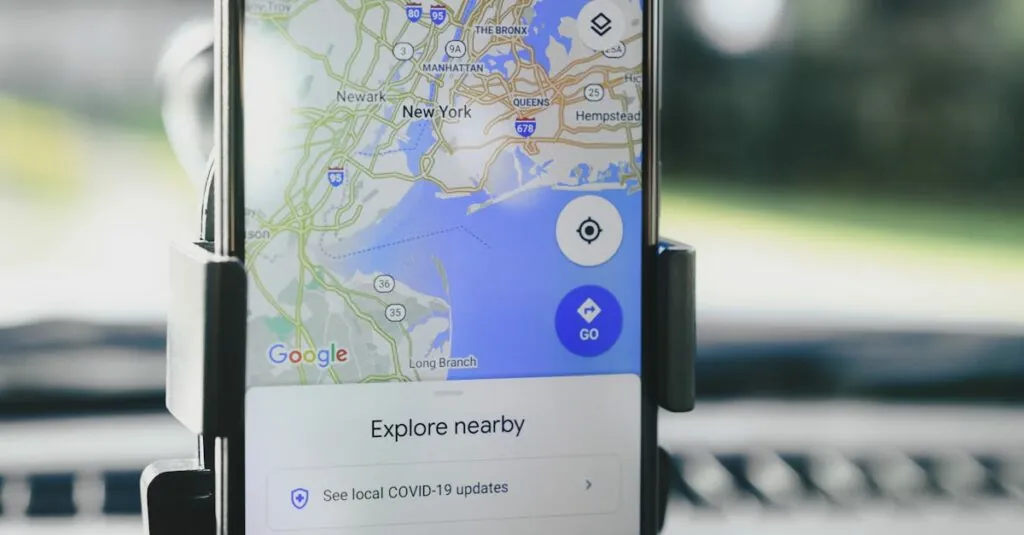In the digital age, collaboration is key, and sharing Google Docs to Google Drive is like passing the baton in a relay race—smooth and efficient. But let’s face it, navigating the world of cloud storage can sometimes feel like trying to find a needle in a haystack. Fear not! With a sprinkle of humor and a dash of professionalism, this guide will turn you into a sharing superstar.
Table of Contents
ToggleUnderstanding Google Docs and Google Drive
Google Docs serves as a powerful word processing tool that fosters collaboration in real-time. Users can create documents that multiple people edit simultaneously, enhancing teamwork. Google Drive acts as a cloud storage solution, allowing users to store, share, and access files from any device with internet access.
Integration between Google Docs and Google Drive streamlines document management. When users create a document in Google Docs, it automatically saves to Google Drive, ensuring easy access. Collaboration becomes seamless, as users can share documents quickly through Drive, inviting others to comment or edit.
Sharing permissions play a crucial role in managing access. Users can set permissions to allow full editing rights or limit access to view-only. Control over document settings ensures that sensitive information remains secure while encouraging teamwork.
Organizing documents within Google Drive maximizes efficiency. Users can create folders to group related files together, simplifying retrieval. Tagging documents with relevant keywords aids in searching, making navigation intuitive.
Lastly, understanding the difference between Google Docs and Google Drive strengthens collaboration efforts. Google Docs focuses on the creation and editing of documents, while Google Drive emphasizes storage and access. Leveraging both tools enhances productivity, allowing teams to work together effectively.
Sharing Options in Google Docs
Sharing options in Google Docs enable users to collaborate effectively. Control access through various settings to ensure the right people can view or edit documents.
Public Sharing Settings
Public sharing allows anyone on the internet to access a document. Users can select “Anyone with the link” to facilitate open access. This option is suitable for documents intended for broad audiences, such as newsletters or public reports. Adjust permissions to either “View,” “Comment,” or “Edit” based on the desired level of interaction. It’s essential to be cautious when sharing sensitive information publicly. Always double-check links to maintain document security.
Private Sharing Settings
Private sharing settings are ideal for confidential documents. Users can share with specific individuals by entering their email addresses directly. Individuals receiving access can be assigned “Viewer,” “Commenter,” or “Editor” roles. This level of control ensures only authorized personnel can access sensitive files. Collaboration thrives when team members can discuss and modify documents without risk. Users can revoke access at any time, reinforcing security and privacy for all involved.
How to Share Google Docs to Google Drive
Sharing Google Docs through Google Drive simplifies collaboration. This process allows users to maintain control over their documents while enhancing teamwork.
Step-by-Step Guide
- Open Google Docs, then select the desired document.
- Click the blue “Share” button in the upper-right corner.
- Enter email addresses of the individuals to share with in the “Add people and groups” field.
- Adjust sharing permissions by clicking the dropdown menu next to each email address. Options include “Viewer,” “Commenter,” or “Editor.”
- Hit “Send” to share the document, or click “Copy link” to distribute via another method.
Tips for Effective Sharing
Share relevant documents only with appropriate recipients to maintain confidentiality. Use descriptive titles for documents to ensure recipients understand the content. Create folders within Google Drive to classify documents for easier access. Regularly review sharing settings to prevent unauthorized access. Consider setting expiration dates on shared links for added security. These strategies bolster document management and enhance collaborative efforts.
Managing Shared Documents
Managing shared documents in Google Drive ensures effective collaboration. Understanding permissions and access settings becomes essential for maintaining control over shared content.
Editing Permissions
Editing permissions allow collaborators to make changes to a document. Owners can assign these permissions to specific users, granting them the ability to modify content directly. It’s crucial to limit editing access to trusted individuals only. Users with editing permissions can add comments, suggest changes, or revise text. This encourages teamwork while keeping the document’s integrity intact. To manage editing permissions, open the sharing settings and select “Editor” next to the user’s name. Tracking all modifications can be done through the version history feature. This transparency fosters accountability among collaborators.
Viewing Permissions
Viewing permissions restrict collaborators to read-only access. These settings prove useful for documents needing feedback without allowing alterations. Owners can share a document by selecting “Viewer” in the sharing settings. Users view content but can’t edit or comment, preserving the original format. This is ideal for presentations or finalized reports. Owners can still receive input by encouraging viewers to submit feedback through other channels. Adjusting who has viewing permissions also helps in safeguarding sensitive information while sharing documents. Always review the list of viewers regularly to ensure appropriate access levels.
Mastering the art of sharing Google Docs through Google Drive elevates collaboration to new heights. By understanding the different sharing options and access permissions users can ensure that their documents remain secure while fostering teamwork.
The integration of Google Docs and Google Drive not only streamlines document management but also enhances productivity. With the right strategies in place users can effectively organize their files and maintain control over who can view or edit their documents.
Embracing these tools and techniques will empower individuals and teams to collaborate seamlessly in today’s digital workspace.



